Havblik Audio - Heroes Of September (2007)
Thursday, August 30, 2007
Havblik Audio is a danish duo based in Copenhagen. Their sound scape primarily consists of sounds related to the ocean; water, seagulls, fishing boats, etc. This is a limited cd-r release containing a 24min. track.
Share this via karagarga or demonoid.
at 12:26 PM
Supersilent - 7 (2005)










Filmed at Parkteatret, Oslo in August, 2004, the performance itself is often downright stunning. As with most of Supersilent's output, this generous 109-minute set largely defies categorization as the free-flowing foursome fuses ambient passages with modal jazz and progressive rock with surges of noise and Eastern melodies. A deeply moving and physical experience from the most lethal improv combo of the present. No overdubs, just pure, raw energy.
Supersilent sounds better after total immersion, as extended exposure clarifies the logic of the group and pushes their subtle-yet-grand interplay closer to the surface. The fluidity with which the pieces develop makes jazz standards of strange bedfellows. The snarling, grainy tones of Helge Sten’s Deathprod project somehow complement Arve Henriksen’s romantic trumpet bursts perfectly. The glacial winds from keyboardist Ståle Storløkken bounce with drummer Jarle Vespestad’s rapid-fire rhythms like two kids on a trampoline. Supersilent’s fusions succeed so effortlessly that they seem to lead to a future where all genres melt together into a common improviser’s toolkit. But my experience with ear-grating electro-acoustic ensembles tells me otherwise. Despite their technological trappings, Supersilent gets by on old-fashioned chemistry.
Centered around trumpeter Arve Henriksen, the only member of the band facing the audience unobscured, Supersilent radiates outward, three spokes pointing towards different traditions.
Consider the postures: Helge Sten, crouches wolf-eyed over a set of knob-boxes. His dark, textured material pays its dues to post-industrial demiurges Nurse With Wound and Coil. Sten looks poised to pounce on the rest of the group, teeth bared with black noise spewing forth from tense jaws.
Rarely blinking, Storløkken monitors his crew, his eyes stealing light from the dim house. More often than not, his tones characterize the songs, leaving the melodic stamps by which they are remembered. Yet he is resolutely group-focused, refusing to outstrip his bandmates.
Henriksen angles downward, towards his mic and trumpet. His muse is more personal, passionate, prone to outbreaks of semi-lingual vocals, sung with impressive range. Supersilent owes much of its humanity to Henriksen’s powerful emotional presence.
Share this via karagarga or demonoid.
at 12:18 PM
Gordon Matta-Clark - Office Baroque / Open House (1972 / 1977)
Thursday, August 23, 2007
Open House 1972, 41 min, color, silent, Super 8
In May 1972, Matta-Clark installed an industrial waste container between 98 and 112 Greene Street in New York's SoHo district. He collected discarded doors and pieces of timber and divided the interior into three openings. This piece records an opening-day site performance by the artist, Tina Girouard, Keith Sonnier, and other friends.
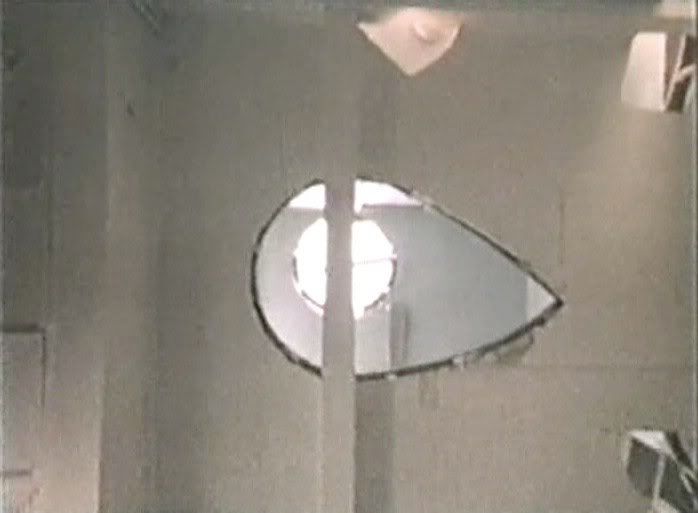
Office Baroque 1977, 44 min, b&w and color, sound
Matta-Clark made a cut in a five-story commercial building located in front of the Steen, a tourist spot in Antwerp. (On Matta-Clark's death shortly after, an attempt was made to save the work as a future museum of contemporary art, but the building was demolished.)
 Share this via karagarga or demonoid.
Share this via karagarga or demonoid.
I've got around 40 invites for karagarga, write me if you want one.
at 10:46 PM
Jem Cohen & Peter Sillen - Benjamin Smoke (2000)
Wednesday, August 22, 2007

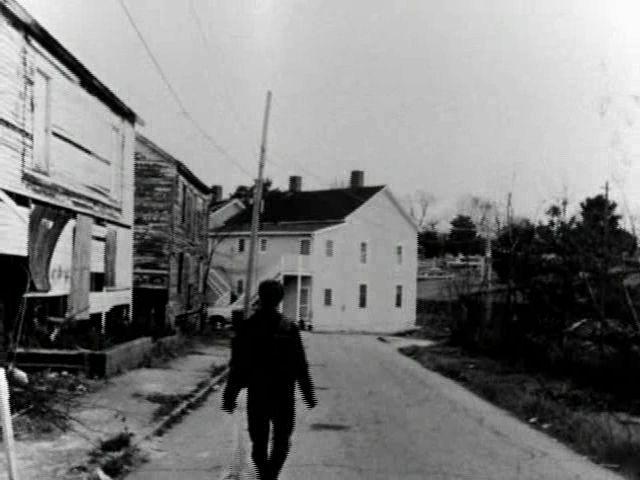
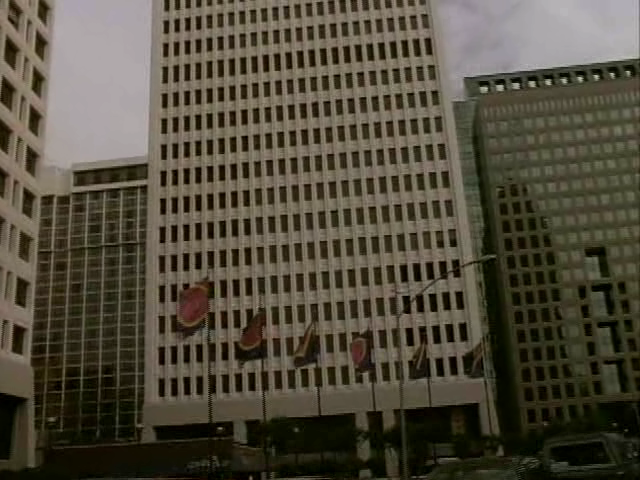

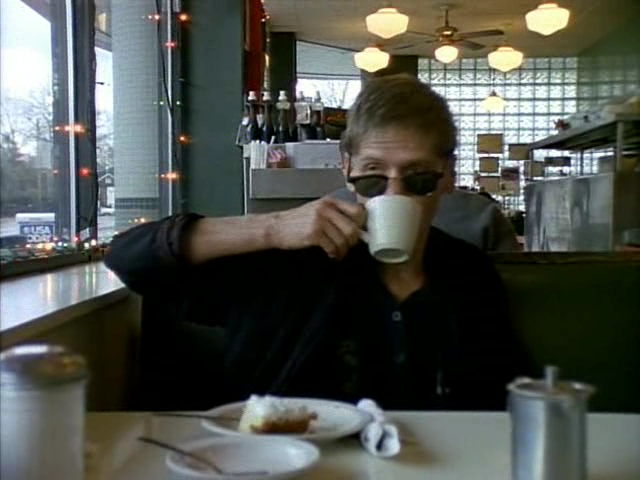
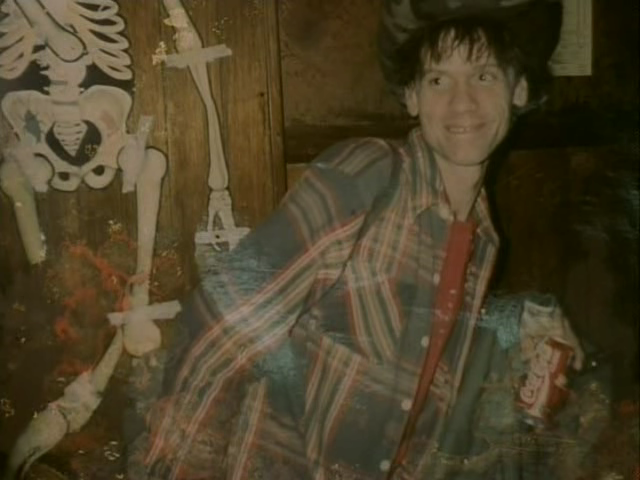
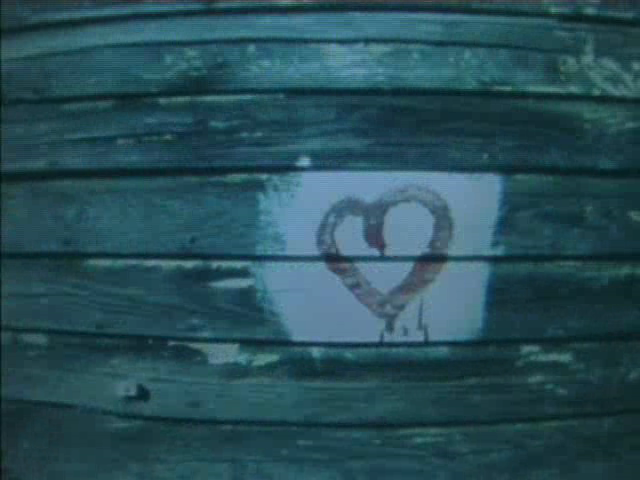
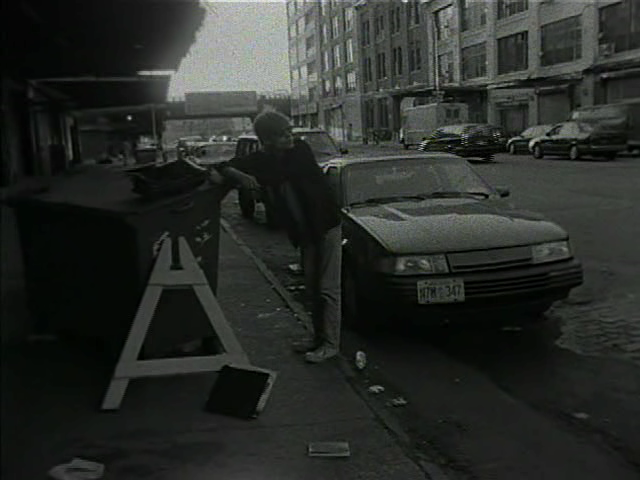
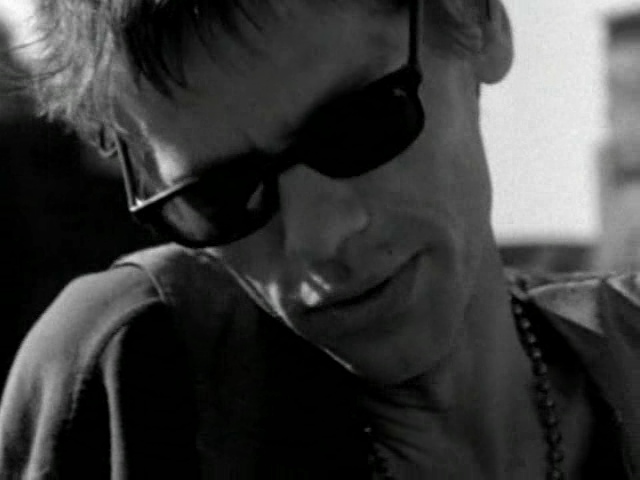
An affectionate, candid depiction of the last days of Benjamin Smoke (born Robert Curtis Dickerson), the gravel-voiced singer with Atlanta punk-blues quintet "Smoke", "Benjamin Smoke" is the result of a long collaboration between idiosyncratic visual poet and lyrical documentarist Jem Cohen, and documentary maker Peter Sillen.
Eschewing voice-over narration, Cohen and Sillen conjure an intelligent, visually hypnotic, and intimate portrait of a maverick original, a self-proclaimed "mouth of the South" with a penchant for cigarettes, alcohol, and cross-dressing. Filmed before Smoke's untimely death from Aids-related Hepatitis C in 1999, the film skilfully weaves filmed reminiscences from colleagues and contemporaries (including rock goddess and "Smoke" muse Patti Smith), performance footage, and sharp, pithy observations from the man himself during his highly unconventional odyssey through American life and music.
Screening as part of the NFT's Jem Cohen season, it is perhaps Cohen's most fully-formed work and certainly several notches above standard music documentary fare. A remarkably honest, occasionally painful work, "Benjamin Smoke" is a fitting epitaph to a remarkable if marginal career.
Share Benjamin Smoke via karagarga or demonoid.
at 11:09 PM
Harun Farocki - Schnittstelle/Interface (1995)
Saturday, August 11, 2007






This video was derived from an installation Farocki made for the Lille Museum of Modern Art, about his own work and working methods. Farocki sits behind his editing stations and describes and illustrates his ways of working, the difference between film and video, working with found footage vs filming new material. As most of his films, it is thus a reflection on how we see or how we mediate, but reflected back upon his own work. He shows fragments of his previous films and analyses and contextualises them anew juxtaposing them as he did in other two-channel installations as I Thought I was Seeing Convicts and Eye/Machine.
Share this via karagara or demonoid.
at 7:18 PM
Jem Cohen - This Is a History of New York (1987)







"This is a History of New York" constructs a fictional landscape of the city from prehistory to the Space Age. Cohen uses an evocative soundtrack to compile genres of architecture and visual arts into a hybridized evolution of New York City. Although the videomaker's intent was to create an accessible street document, on an abstract level, the tape inquires if the Great Ages of Man might not co-exist here and now, before our very eyes.
Share this via karagarga or demonoid.
Jem Cohen - Chain(2004), Lost Book Found(1996) & Free.
If you do not have an account at karagarga, follow the instructions on your right.
at 11:35 AM
Harun Farocki - Workers leaving the Factory/Arbeiter verlassen die Fabrik (1995)
Thursday, August 9, 2007
Workers Leaving the Factory - such was the title of the first cinema film ever shown in public. For 45 seconds, this stillexistant sequence depicts workers at the photographic products factory in Lyon owned by the brothers Louis and Auguste Lumière hurrying, closely packed, out of the shadows of the factory gates and into the afternoon sun. Only here, in departing, are the workers visible as a social group. But where are they going? To a meeting? To the barricades? Or simply home? These questions have preoccupied generations of documentary filmmakers. For the space before the factory gates has always been the scene of social conflicts. And furthermore, this sequence has become an icon of the narrative medium in the history of the cinema. In his documentary essay of the same title, Harun Farocki explores this scene right through the history of film. The result of this effort is a fascinating cinematographic analysis in the medium of cinematography itself, ranging in scope from Chaplin's Modern Times to Fritz Lang's Metropolis to Pier Paolo Pasolini's Accattone!. Farocki's film shows that the Lumière brothers' sequence already carries within itself the germ of a foreseeable social development: the eventual disappearance of this form of industrial labor. (Klaus Gronenborn, Hildesheimer Allgemeine Zeitung, November 21, 1995) The first film ever projected is listed under the title The Workers Leaving the Factory. Chaplin played a worker, and Marilyn Monroe once exited the gate of a fish factory... but the workers' film has not become a main genre in film history. The space in front of the gate is far from being a preferred cinematic location. Most films begin when the work is over. I have collected images from several countries and many decades expressing the idea "exiting the factory", both staged and documentary - as if the the time has come to collect film-sequences, in the way words are brought together in a dictionary.



Share this via karagarga or demonoid.
'harunfarocki' & 'farocki' at del.icio.us.
Harun Farocki at UBU.
farocki-film.de
ps. this will probably be the last post, until late august.
at 11:12 AM
Ross McElwee - Time Indefinite (1993)
Wednesday, August 8, 2007
Autobiograhpical filmmaker Ross McElwee uses his camera to record various events and people in a cinema verite style, often taping conversations he is having at the time he is having them. Much of the film is accompanied by his personal stream-of-consciousness voice-over recorded after the footage is shot. In Time Indefinite McElwee deals with many things in his life, but ends up focusing on death in his family and in his friend Charlene's life. The final scenes deal with he and his wife's newborn son.


The defintion for indefinite includes meanings such as "having no exact limits or no limits at all" and "not precise or clear in meaning." A central content issue that McElwee addresses in Time Indefinite is the concept of death. Death is the inevitable limit in boundless time; yet like time it is vague and abstract. After a somewhat rapid succession of events, McElwee is forced to deal with death's presence throughout his family. Because of his chosen autobiographical format, the viewer receives extremely personal, first person reactions to this universal issue as well as being shown its comparable effects on others. Unlike the detachment felt when filming his blood test, the filmmaker finds that the camera does not dissipate or explain the pain of loss. It does, however, provide the medium for an interesting and ambiguous account of man's reaction to something as serious and indefinite as death.
McElwee begins his emotional and intellectual struggles with death somewhere around the middle of the film. He suffers the death of his grandmother, his wife's miscarriage, and his father's death one soon after the other. This timing intesifies the effects of these catastrophic events to the audience and establishes this subject as a focal point for the rest of the film. When McElwee returns to his father's home, he finds life carries on there as it did in the past; the same man mows the lawn as he has done for years, and the unused piano receives its yearly tuning. These small details place death in the context of a "time indefinite" that endlessly leaves things in the past through its continuation. McElwee and the viewer are now more sensitive to death as the film accentuates the extermination of bees at his father's house and the last moments of a fish on a pier. The filmmaker poses the question of existence and its limits but cannot find an answer. Similarly, he cannot find anyone to articulate the pain of his father's passing; he eventually turns the camera on himself to talk about his family and death. Still, he cannot resolve these issues and ends up using voice-over narration to drown out his ramblings.
Unable to cope in a satisfactory manner with his loss, McElwee visits the advisory figure in his earlier success Sherman's March as well as this film, Charlene. The viewer learns of her husband's tragic death in a fire a few years back, and she has also had problems dealing with this issue; she keeps the ashes of her husband stored away in a plastic bag in a closet. It is a disturbing image when she brings out the bag full of gray particles and talks of this jumbled mass being her late husband. Also quite unsettling is the fireman's talk of identifying the presence of a body during the fire by the smell. Charlene expresses a desire to sprinkle Jim's ashes in the ocean but cannot bring herself to do it, worried that the fish and sharks might get them. McElwee states later in the film about how he wanted to keep death from becoming abstract, and it seems that Charlene feels the same way. She refers to the ashes as Jim, as if they still contained the essence that was her husband. Furthermore, she expresses concern over the well-being of the ashes and prefers to keep them safe in the closet instead of sprinkling them in the water. The film shows that Charlene still struggles with her pain, and her way of dealing with it seems both distorted and sad. McElwee has a sense that dispersing the ashes and "letting go" would be the best thing but realizes that his inability to deal with his own situation does not afford him an guiding role. One feels sorrow for Charlene, usually knowing and confident, now seeming very unsure and confused. McElwee doesn't get the example or answer he undoubtedly had hoped for in coping with this situation, except perhaps that there is no answer.
It is vitally important for the film to show the worth of life, and even more so, the great tragedy of death when these issues are constantly cheapened, glossed over, romanticized and exploited in today's popular fictional cinema. Death has become something to laugh at, an unimportant plot device to further the storyline; it's used to give the story an 'edge' or to easily manipulate the audience's emotions. Perhaps that's why the Charlene segment is so unsettling—because it is real. In a dark comedy, a woman holding on to her husband's ashes for fear that the sharks and fish will eat him would be comical. But this film presents this attitude in a way that its absurdity only adds to the feeling that death is too enigmatic and difficult to handle in a normal way. That McElwee addresses this subject in a serious manner by putting his own personal painful experiences onto film is admirable and makes for an interesting viewing experience.
McElwee sticks basically to the verite style he utilized in Sherman's March. There are more static shots and outside footage in Time Indefinite, however, establishing it as a more pensive and serious work as opposed to the improvisational and whimsical feel of the earlier film. The monotone voice-over narration, while adding to the sarcastic wit of Sherman's March, functions equally well in adding to the overall melancholy of this film. The long shots of clouds outside an airplane window emphasize the filmmakers meditations on more abstract and spiritual concepts. Although McElwee finds no direct answer to his questioning of how to deal with death, he finds solace in the love for his wife and child. On the plane ride back home he comments on his failure to "corner death with his camera" but also on how much he missed his wife. The birth of his son overshadows his fixation suggesting that finding hope in new life is the easiest way to cope with death. Perhaps he also finds some comfort in having his family preserved on film in a "time indefinite."
Share this via karagarga or demonoid.
More about Ross McElwee here.
at 12:51 PM
Peter Greenaway - Vertical Features Remake (1978)



Vertical Features Remake is a playful parody of avant-garde theorising in which academics argue about the life and work of Tulse Luper, Greenaway's best known fictional character. In their efforts to reconstruct one of Luper's early projects, the publically-funded Institute of Reclamation and Restoration (IRR) end up with four versions of the film.
"Vertical Features Remake is a partly autobiographical absurdist fantasy that could have been conceived by Lewis Carroll. It presents the world of the IRR, the powerful Institute of Reclamation and Restoration, which has just discovered some sketchy surviving records of a ‘film project undertaken by Tulse Luper when he was working officially, but it seems reluctantly, on a State landscape Programme.' That programme was code-named Session, and its ominous aim was ‘the creation of a dynamic landscape'. Vertical Features was a document made in protest by Tulse Luper, and Vertical Features Remake consists of the IRR's four attempts to reconstruct that film.
In fact the film is an attack on the whole British film-culture, with the IRR on one side and pedantic academia on the other. Both sides are seen as unconscious partners in a sinister threatening Session 3, laying waste the cinematic landscape. This never becomes a crude allegory or a simple protest, though; the short films-within-the-film are remarkable on their own terms and the musical collaboration with Michael Nyman makes for a harsh lyricism".
Share this via demonoid or karagarga.
'greenaway' & 'petergreenaway' at del.icio.us.
at 12:33 PM
Lars Von Trier & Jørgen Leth - De Fem benspænd AKA The Five Obstructions (2003)
Monday, August 6, 2007
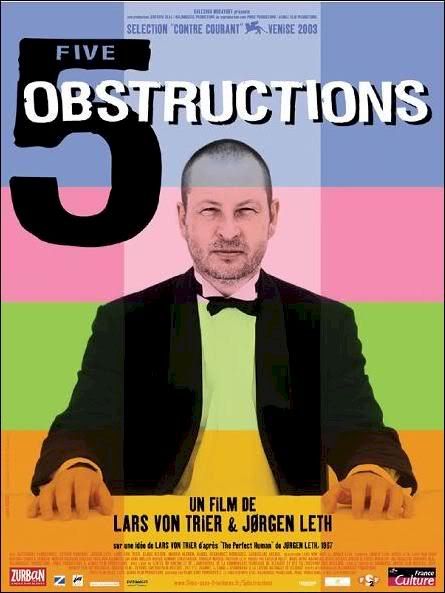
"The Five Obstructions", a 100 min. theatre documentary directed by Lars von Trier and Jørgen Leth. An investigative journey into the phenomenon of "documentary", based on manifestos written by each director. About a filmmaker not only revisiting, but also recreating one of his first films, The Perfect Human / Det perfekte menneske (1967), a document on life in Denmark, containing the familiar Leth idiosyncrasies.


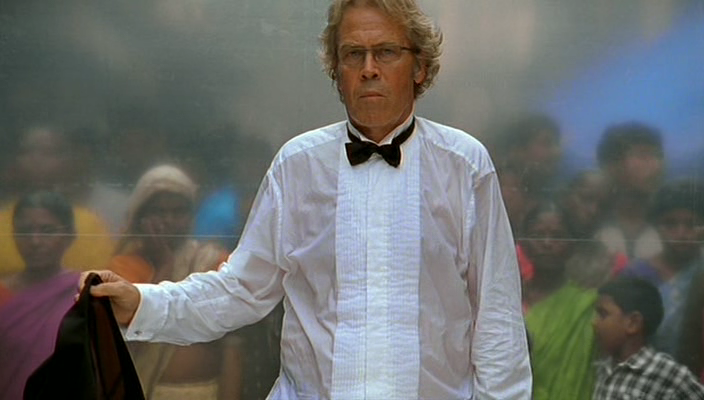



English subtitles included.
Share this via karagarga and demonoid(will be added later today).
at 11:35 AM